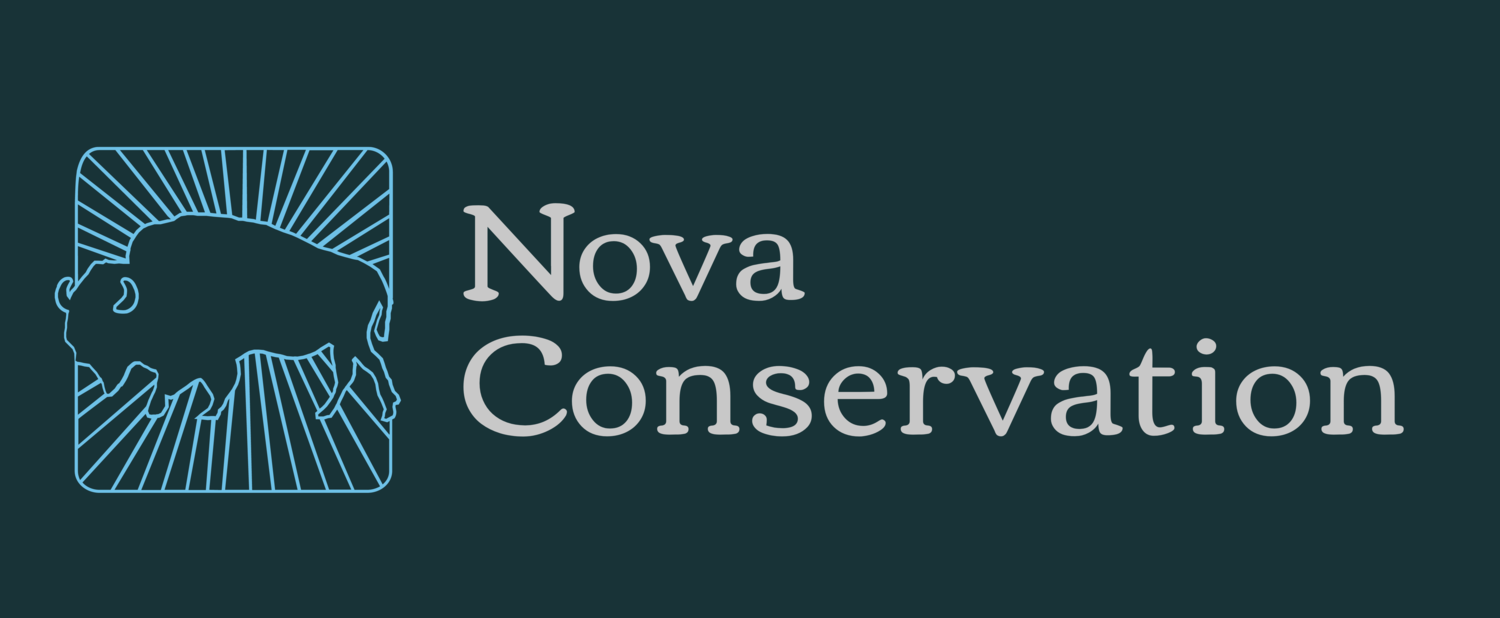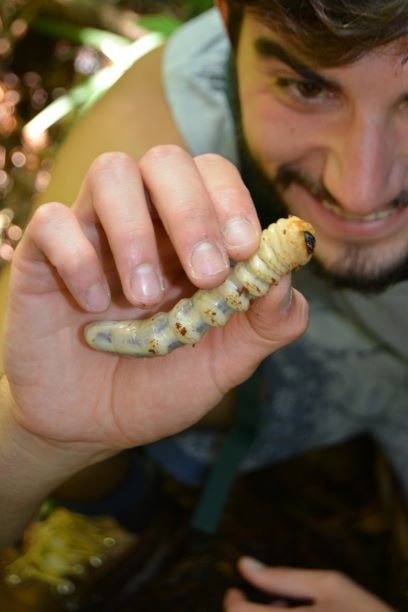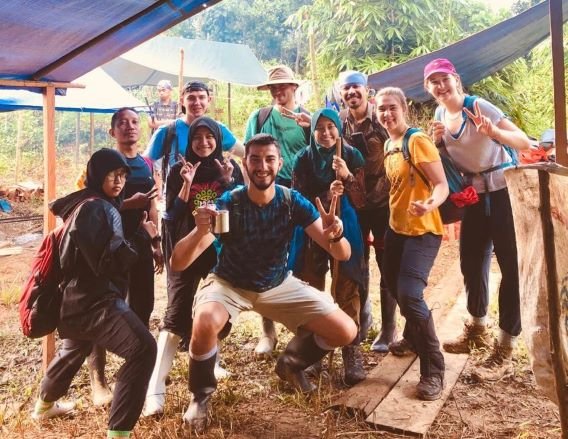Shimbov Is Wild!
Welcome back to our First Friday Field Spotlight Blog! Each 1st Friday of the month, we will share blogs written by different scientists about their experiences in conservation and their path that has led them to where they are today.
Join us each month to dive into the experiences & educational stories of conservationists just like you. Learn about their career paths, field adventures, and the highs and lows of working in conservation.
Check out our past Friday Field Blog interviews from Emily Nollan, Natasha Bartolotta, and Jeffrey Ward.
Our latest spotlight Field Friday blog features Mario Shimbov. He is a passionate 26 year old field biologist & science communicator based in the UK. He has worked on projects across the globe — Honduras, Indonesia, even his own backyard in England. Learn more about Mario’s story and experiences below!
My career journey
My passion for nature comes from very early memories of wild outdoor adventures with my family. Both of my parents are naturalists at heart, and I have kept this intrinsic connection with nature to this day.
I’ve navigated many different careers in environmental conservation. In the years post-graduation (BSc in Zoology from Anglia Ruskin University – Cambridge), I worked and volunteered at 10 different non-governmental organizations, charities, & institutions. My path has been anything but linear, but each experience enabled me to build my professional development in the wildlife conservation sector.
My career experiences have been long and strenuous — but so fulfilling and useful. Even non-conservation roles (i.e. customer relations) helped develop my communication skills and gave me the ability to deal with highly stressful situations. I have also worked alongside renowned scientists which expanded my analytical and practical abilities in field research, laboratory examination, project management, and data handling.
Behavioural laboratory experiments on crickets at university. I'm standing on the left.
Together, these seemingly dissimilar roles helped me reach my goal — to find solutions to biodiversity loss and climate change via science communication. I seek to bring awareness of the interconnectedness of life and inspire people to maintain a harmony with the environment.
Early in my career I quickly realized the mental and physical challenges of fieldwork. The idealistic vision of working with wild animals and living in beautiful, remote places quickly evaporates upon returning from a strenuous, energy-depleting research expedition.
Acknowledging this, I began adapting science communication, data analysis, public outreach as my forte, instead of scouring the internet for field expeditions.
Illegally cut forest patches could be seen even in the deep rainforest of Buton island.
It doesn’t matter if you work on saving endangered species or ecosystems or if you run an online conservation awareness blog — all conservation work is crucial. It boils down to a balanced coexistence with the world around us and an awareness and appreciation for our planet.
A true depiction of a cloud-forest (CNP, Honduras)
One of the best experiences I have had in my career was the first time I traveled to Honduras in 2016 for a field-based expedition with Operation Wallacea. I was a Research Assistant in the cloud-forest of Cusuco National Park, which is home to astonishing floral and faunal biodiversity richness, specifically endemics — species found nowhere else on earth.
My fieldwork in tropical paradise marked a huge milestone in my budding career: As part of the OpWall team, we consolidated biological research with ecotourism, integrating Hondurian culture as well. From collecting data on critically endangered wildlife to learning essential survival skills from indigenous communities, these practical field experiences shaped my passion and understanding of conservation efforts.
Found this huge beetle larva during our wilderness survival skills!
Conservation field projects are hard but worthwhile and fun
Despite the rugged terrain and miles of hiking a day, living in minimal housing and working long hard hours, field research is so rewarding. The little moments that happen while in these remote places are memories that last a lifetime and make all the hard work worthwhile.
Conducting field research at night can be especially creepy. One night on Buton Island, a small island in southeast Indonesia, our team was surveying bats via mist nets. Sitting in complete darkness, the scientists, guides, and I waited for the first bats to be caught.
Snorkeling in the Black Sea, Bulgaria
Then in the midst of our silence we heard a loud, ominous grunt— a rough low vocalization that sent shivers down our spines.
I was dumbfounded. The local guides wildly gestured and spoke in hushed Bahasa, the local language. The grunting continued. No one really knew what was happening or we were supposed to do.
As the guides radioed the main camp, we caught on that the noise was a cryptic Anoa, or dwarf buffalo. The senior mammalogist of the project was immediately sent down to our location. Despite studying its population dynamics for over five years, he had never even seen an Anoa in person!
Anoa photo via Steve Wilson on flickr
Unfortunately by the time he made it down to us, it was too late— the Anoa had departed. I was relieved, but I’ll never forget the disappointed expression on his face after running for twenty minutes to find nothing. However, the rest of us were grateful nobody got hurt.
Memories like this are just some of the many perks of having a career in wildlife conservation and research. Though field positions are tiresome and challenging, I wouldn’t trade it for the world. But these hardships are worth remembering as you begin your path into wildlife conservation.
Despite the pungent smell we were proud to have retrieved the skull of a Sperm whale (Physeter macrocephalu) from the mangroves
I love encountering unique and rare wildlife. A few years ago I was in the field in Wakatobi archipelago — a famous Marine Protected Area in the Coral Triangle. We were conducting coral reef ecological assessments off the island of Hoga, Indonesia — reefs booming with underwater biodiversity.
I was lucky enough to swim alongside a male Yellow-lipped Sea Krait (Laticauda colubrina). Sea Kraits have a neurotoxic venom 10 times stronger than that of a rattlesnake! This particular one was hunting small fish hidden in the complex coral structures. Here’s a video I took of the encounter!
A female Yellow-lipped Sea krait (Laticauda colubrina) basking on a coral rock opposite our bungalow on Hoga, Wakatobi MPA
On that same day I observed the habitats of a very timid invertebrate with a bizarre evolutionary adaptation: The Peacock Mantis Shrimp (Odontodactylus scyllarus). If you don’t recognize the name, do yourself a favor and watch their powerful punch here.
Advice to the younger generation of wildlife conservationists
From venomous snakes in Indonesia to the eerie noise of an Anoa, I have had my share of incredible memories that will last me a lifetime. Though it hasn’t been an easy path, I would never go back and change it. The ups and downs carved the path to who I am today.
My advice? Follow your heart. But be rational and realistic about the decisions you choose and the path you take. Avoid comparing yourself to others and don’t take things personally; don’t be concerned with what people or society thinks of you. Stand up for what you believe in and put the time and effort in to make the connections to be involved with groundbreaking research in biology. People will always have something to say, but keep true to your heart, your mission and your beliefs. The rest will fall in place.
Early morning coffee before an eight hour hike through rainforest of Buton island in Indonesia
Don’t be afraid to ask questions. Ask for help & support — I still struggle with this! Field research is amazing, but can be lonely and difficult. Months without seeing or hearing from family and friends is extremely challenging. Remember this as you plan your path early in your career — but also remember the benefits of your research and the reward you get internally from the experiences.
My greatest source of inspiration has been Mother Nature herself, and my genuine connection with the like-minded individuals in our community. We all come from diverse backgrounds & parts of the world, but share a common connection as we fight to help conserve our planet.
This keeps me going. As a realist I often find it unbearable to work in the wildlife conservation sector. We live in a world where many people simply don’t care about what is the legacy they leave behind. If you feel this way and want to find a community of like-minded individuals fighting for your cause, I urge you to start volunteering, interning, and learning. You can— and will— find your place in this world.
Uniquely adapted, Dunn’s climbing salamander uses his prehensile tail to swiftly move across vegetation in the cloud-forest of CNP
I joined the Nova Conservation team because they are here to support young conservationists in their journey to give back to the planet. Laura, their founder, reached out to me a few months ago and I was immediately on board with Nova’s mission. We have a comprehensive database of reviews for conservation organizations which allows you to assess the company or non-profit you’re looking into. What a much needed resource!
Nova Conservation connects people, institutions, and other scientific or nature-based tourism seeking to experience different types of conservation opportunities.
In my humble opinion, the goals and long-term mission behind NC would help our planet by providing consumers to choose ethically-conscious experiences anywhere around the globe.
I’m honored to be a part of a diverse team of scientists who really grasp problems in conservation from all points of view.
Being a part of the Nova Conservation team has aligned my personal and professional goals: helping others become a part of wildlife research and learning more about nature and our world. If you’re interested in becoming involved, visit our site and follow us on social media. We are constantly putting out helpful resources, whether conservation is your hobby or your full-time career. Or look through our database and find amazing organizations to volunteer with — and learn which ones to avoid!
My first Palm Pit Viper (Bothriechis marchi) at the bottom of a transect in CNP, Honduras.JPG
Thank you Mario for sharing your story with us! You can follow him on Instagram: @shimboviswild












